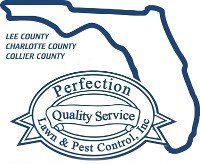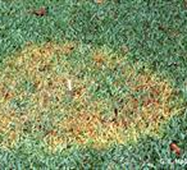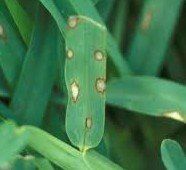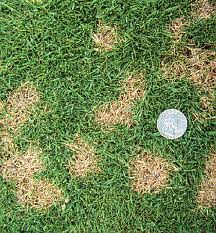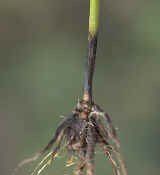Is Your Lawn The Envy of theNeighborhood? It Could Be!
Customer Login
Turf Diseases
Quality Results For Homeowners
Who Appreciate The Difference!
Turf Diseases
Diseases are the exception and not the rule for lawns.
Spots and patches of yellow or brown turf grass do not necessarily mean the lawn has a disease. Because turf grass diseases are difficult to diagnose, it is often faster to rule out involvement of other factors than to verify the presence of disease. An injury to turf grass is a destructive physical occurrence, such as pesticide damage, mowing the grass too short, lack of water, foot traffic, tire damage or a fuel leak. After ruling out any of these causes for damage, it is wise to have the lawn evaluated for disease. Some examples of possible lawn disease are as follows:
Brown Patch Fungus
Symptoms of brown patch may vary greatly with the type of grass and soil conditions. The disease usually causes thinned patches of light brown grass that are roughly circular in shape. These areas range in diameter from a few inches to several feet. Often the center of the patch will recover, resulting in a doughnut-shaped pattern.
When disease conditions are favorable, large areas of the lawn may be uniformly thinned and eventually killed with no circular patch being evident. This type of pattern is commonly seen on infected St. Augustine grass grown in shady, moist locations.
Close inspection of grass blades reveals small, irregular, tan leaf spots (burnt cigarette appearance) with dark-brown borders in combination of rotted leaf sheaths near the soil surface.
Gray Leaf Spot Fungus
This particular fungus mainly affects St. Augustine grass and occurs during warm humid weather. Infected leaves form olive green to brown water soaked dots. These spots enlarge to form elongate brown legions. The moist Florida climate allows spores to produce with abundance. This gives the spots a velvet gray appearance.
Proper irrigation management should prevent drought-stressed turf grass without increasing disease pressure by extending periods of leaf wetness. For example, applications made in early morning generally dry quickly on sunny days; limiting favorable (wet) conditions for growth of the pathogen.
Late afternoon or early evening irrigation often allows foliage to remain wet into the evening, through the dew period, and into the next morning and should be avoided. Extended periods of leaf wetness favor infection and spread of the pathogen and increase the likelihood of disease.
Dollar Spot Fungus
Dollar spot fungus attacks most turf grasses grown in the south Florida. Bent grass, hybrid bermuda grasses and zoysia are most susceptible to dollar spot. The disease occurs from spring through fall, and is most active during moist periods of warm days (70-85°F) and cool nights (60°F) in the spring, early summer and fall. The disease is spread from one area to another by water, mowers, other equipment or shoes.
On fine textured and close-cut turf, the disease appears as round, brown to straw-colored and somewhat sunken spots approximately the size of a silver dollar; thus, the common name "dollar spot". In coarse textured grasses maintained at taller cutting heights, the dead spots are larger and more diffused.
Take All Root Rot
The first symptoms of take-all root rot usually appear in the spring and summer as yellowing (chlorosis) of the leaves, which gives the affected areas of the lawn a yellow-green cast. Yellowing of the turf canopy can, however, indicate other problems as well. Similar symptoms can often be seen on turf suffering from chinch bug damage, certain nutrient deficiencies, or drought stress.
Later, severe thinning of the turf in circular to irregular patches ranging from 3 to more than 15 feet in diameter occurs as the infected stolons die. If all the grass dies, ugly patches of bare ground, which are often invaded by grassy and broad leaf weeds, are left. Heaviest damage occurs on sunny sites; symptoms often are less severe on turf under heavy shade.
St. Augustine grass lawns suffering heavy take-all damage take on the appearance of a patchwork pattern. In southern Florida, where St. Augustine grass does not go dormant, recovery of take-all-damaged turf often occurs during the winter. However, symptoms usually reappear the following summer.
Perfection Lawn & Pest Control, Inc.
11985 Amedicus Lane, Ft. Myers, FL 33907
Phone: (239) 482-3723
| Fax: (239) 482-6985
11985 Amedicus Lane, Ft. Myers, FL 33907
perfectionlawnandpest@gmail.com
| Phone: (239) 482-3723
| Fax: (239) 482-6985
Content, including images, displayed on this website is protected by copyright laws. Downloading, republication, retransmission or reproduction of content on this website is strictly prohibited. Terms of Use
| Privacy Policy
